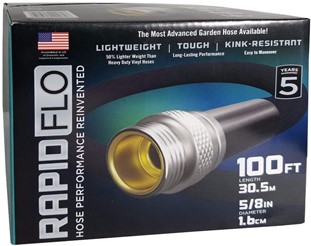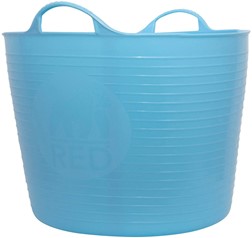by Stan Logan | Apr 11, 2021 | Garden tools
I would hazard to guess that you have either a can of WD-40 or a can of silicone spray, or both, in your arsenal of improvement products. Which of these is better? Let me give you my opinion. (If you don’t want it, stop reading.)
The term “WD-40” is derived from the fact that the aerospace company developing this product was trying to find a chemical that would displace water—thus “WD” stands for water displacement. As it happens, WD-40 was the 40th formula that was finally successful in keeping water away from the skin of the Atlas rocket and preventing corrosion. I have always found this fact fascinating. (Not so much for you?…Oh well.)
I always include a can of WD-40 in my supply of tool sharpening equipment. Not only do I use it to coat metal to retard rusting, but the spray tends to dissolve the gunk that accumulates on pruners and loppers. (Oven cleaner and a brush really does a thorough job though.) And, of course, it is a lubricant that reduces friction and stops those irritating squeaks. I also just learned from my Flipboard app (A great app for learning the latest news.) that WD-40, being oily, can be applied to wooden handles to reduce the occurrence of splinters. Then, too, if you notice that the rocket in your back yard is starting to corrode, this product is a must.
Now, silicone, on the other hand, is not petroleum based. Therefore it dries and has far less odor for use indoors. Since it dries, it won’t trap dust and dirt. Silicon is therefore ideal for lubricating the tracks of sliding doors and screens, lubricating tracks of drawers, improving the function of padlocks and doorknobs, and stopping the squeaks of door hinges.
On a personal note, I used WD-40 to lubricate the switch on my leaf blower. The blower was set aside on a flat surface and was still plugged to a power cord. While I was doing something else, the blower turned itself on, and since the air intake was blocked, the motor overheated and started a fire. Being a slow learner, I bought the same model of leaf blower again. Since the power switch on this one was sticking like the last one, lubricated again with WD-40. Believe it or not, this resulted in a melted switch. Who’da thought! I had to take the blower apart and hard wire it. Now I have to discnnect the extension cord whenever I want to stop blowing. So apparently it is unwise to use WD-40 on electrical switches.
So in conclusion, I would suggest that you have both of these products. Use WD-40 where you want to leave an oily surface, and use silicone where you want to lubricate but leave a dry surface.
Stan, The Slow Learning Man

by Stan Logan | Apr 7, 2021 | Garden tools, Irrigation
I’ve taken a chance here. While walking the isle at Costco, I spotted a pallet of boxes of garden hoses—RAPIDFLO 100 ft length, 5/8 inch diameter, lightweight, tough, kink-resistant. You see, LaVille has been wrestling with a rubber hose that has become stiffer with age. (What’s new?) She has had to drag it through the main iris garden and then wind it back up on the hose reel when done. So I uncoiled the old, stiff hose off the reel. Actually it now remains permanently coiled along the side yard. I then attached this new hose to the spool and turned on the pressure. I could see that LaVille at the far side of the yard was now watering with less than expected flow. Not only did the 100 foot length impede the flow, but the 5/8 inch hose itself was perhaps still somewhat flattened. Maybe continued use will expand it—probably not. Perhaps the company should change it’s name to SLOFLO. But LaVille says that the gentle spray was actually desirable. Anyway, when LaVille was finished watering, I had her close the spray wand valve to keep the hose turgid, and wound the hose up on the reel. You don’t want a flattened hose on the reel. That would really limit flow. The winding task was truly easy to do because the hose is really lightweight.
So, do I recommend this hose? The jury is still out at our house. I would say that if you are tired woman handling (Is that sexist?) an old, heavy hose around, this may be the hose for you. You can easily coil the hose in a large pot if you don’t have a reel. I am going to assume that this hose design is less likely to leak as the expandable hoses tend to do. Keep in mind that this is 100 feet of hose. It seemed a little long for my yard that is only 80 feet wide. As of 3/20/21, this hose if available at Costco for $39.99. If you miss it there, Amazon has it for $55 (Yikes!).
Happly hosing,
Stan, The Tool Man

RapidFlo Hose

by Stan Logan | Apr 7, 2021 | Garden tools
If you want to stand out from the typical gardener who uses the ubiquitous ugly 5 gallon plastic bucket to contain everything from tools to weeds, here is your chance. Tubtrugs is the maker of an entire line of colorful, flexible, containers that would fulfill your every need. I have a friend that bought the 10 gallon size, and liked it so well that he bought 3 more. Keep in mind that if you are like me and require the rigid edges of a bucket to assist your rise from the ground to a vertical position, this may not be your best bet. But for those of you with younger legs, here is your chance to secure the envy of all your neighbors and gardening friends. Amazon has a great assortment for you to peruse. And remember, if it rains, Tubtrugs has you covered—better go with the 10 gallon size.
Stan, The Bucket Man

10-gallon Tub Trug flexible plastic bucket


